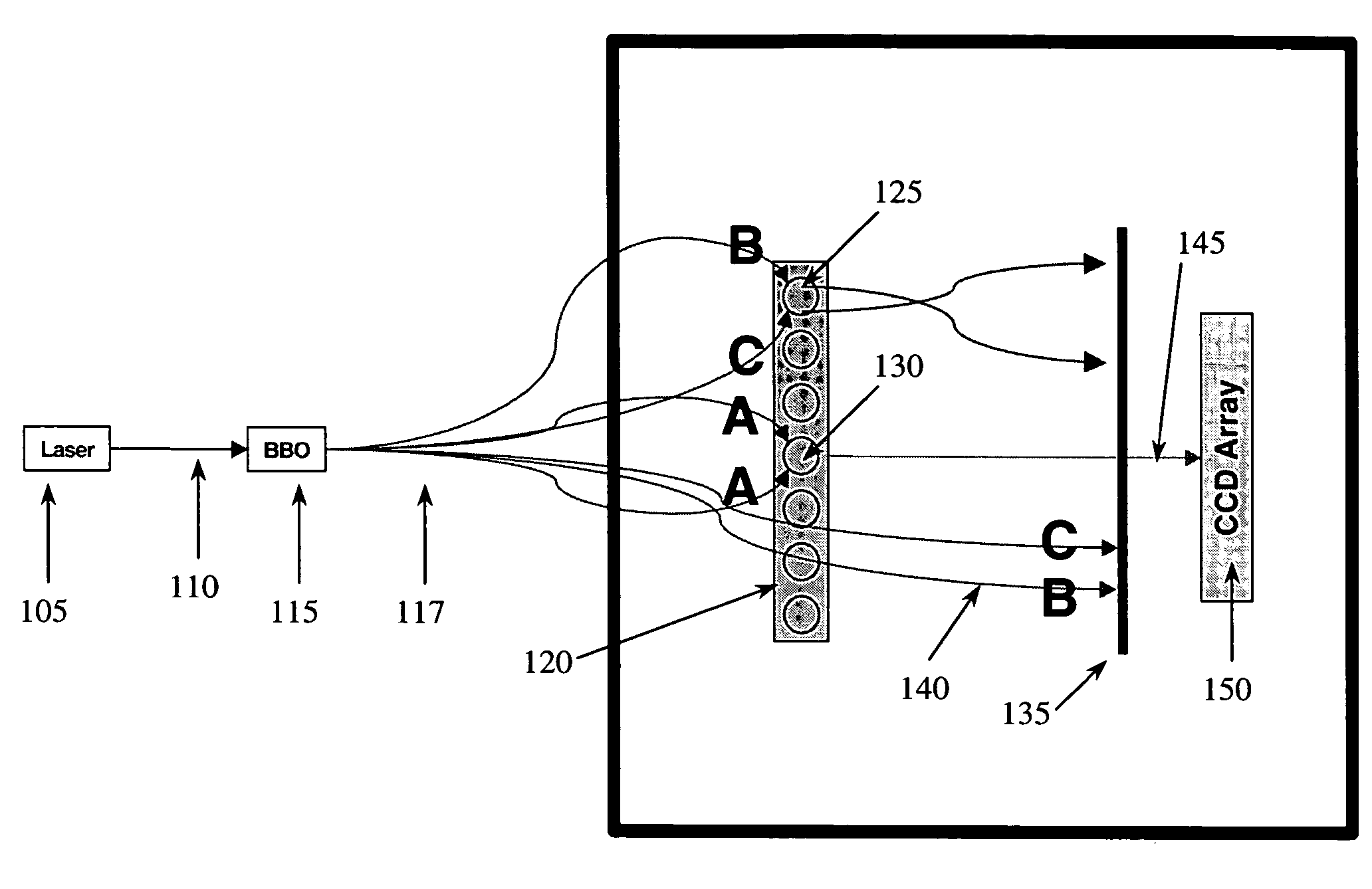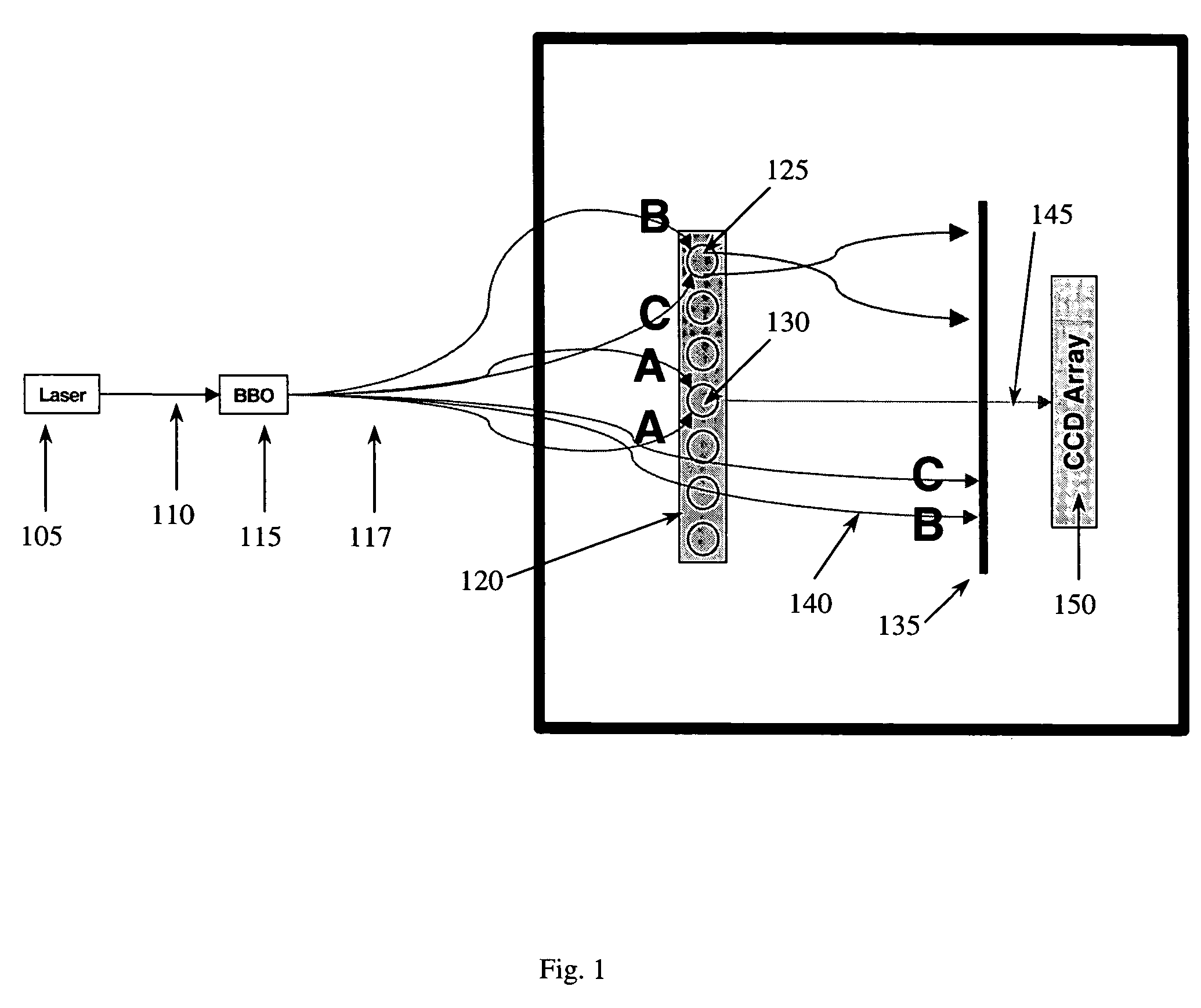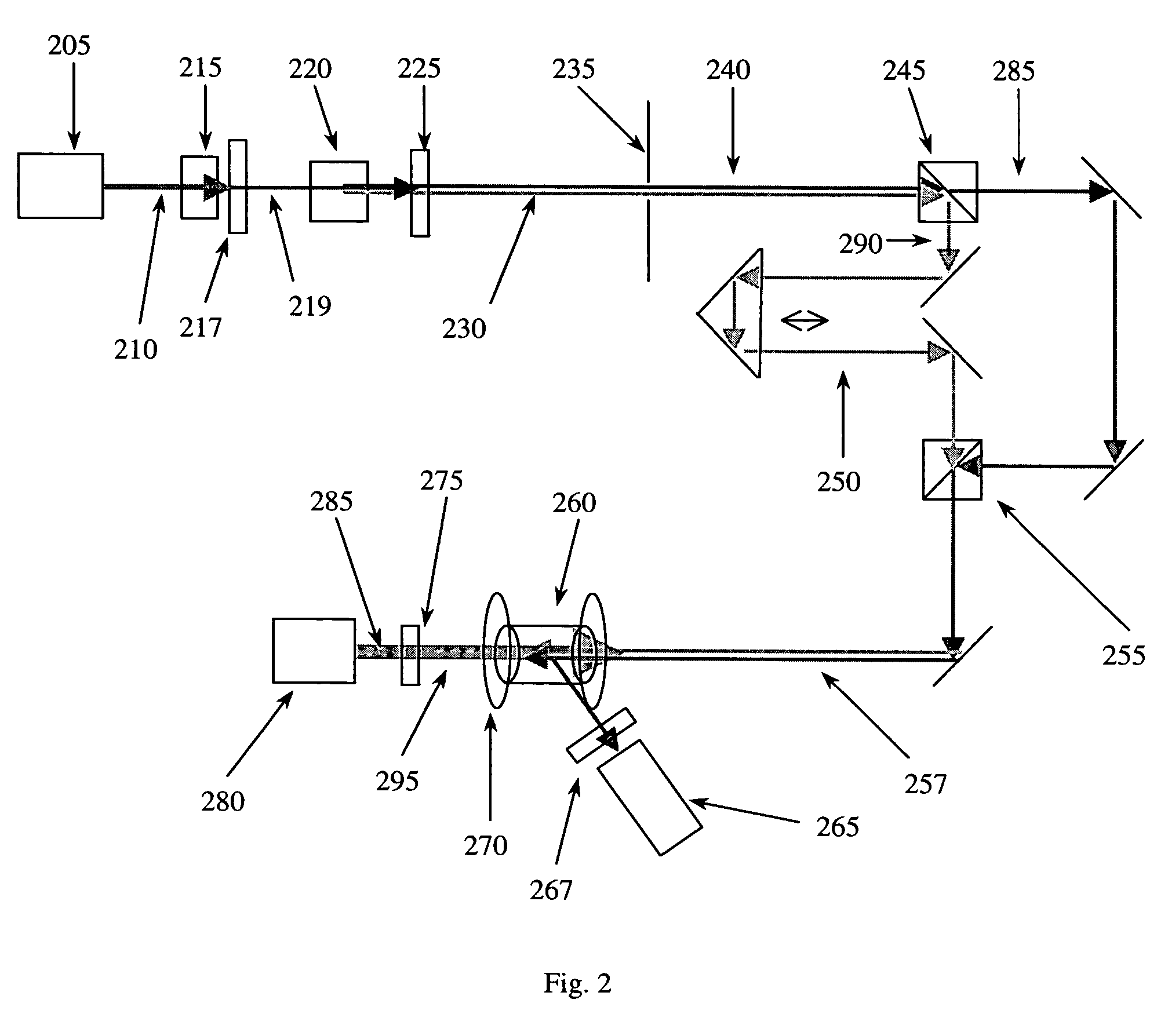Quantum steganography
a quantum steganography and entanglement technology, applied in the field of quantum steganography, can solve the problems that the high-intensity beam of entangled photons cannot be readily used in applications such as entangled beam photolithography or entangled beam confocal microscopy, and achieves low random multi-photon absorption, high entangled photon absorption, and reduced random photon absorption
- Summary
- Abstract
- Description
- Claims
- Application Information
AI Technical Summary
Benefits of technology
Problems solved by technology
Method used
Image
Examples
Embodiment Construction
[0075]The particulars shown herein are by way of example and for purposes of illustrative discussion of the embodiments of the present invention only and are presented in the cause of providing what is believed to be the most useful and readily understood description of the principles and conceptual aspects of the present invention. In this regard, the description taken with the drawings provides a fundamental understanding of the present invention, making apparent to those skilled in the art how the several forms of the present invention may be embodied in practice.
[0076]FIG. 1 depicts an apparatus for detecting entangled-photon pairs. Laser 105 produces classical (i.e., non-entangled) blue light 110, which is sent to nonlinear crystal 115. Nonlinear crystal 115, discussed further below, converts classical light to entangled-photon light. Blue non-entangled photons 110 enter nonlinear crystal 115, and are there converted to red entangled-photon pairs 117, including, for example, en...
PUM
 Login to View More
Login to View More Abstract
Description
Claims
Application Information
 Login to View More
Login to View More - R&D
- Intellectual Property
- Life Sciences
- Materials
- Tech Scout
- Unparalleled Data Quality
- Higher Quality Content
- 60% Fewer Hallucinations
Browse by: Latest US Patents, China's latest patents, Technical Efficacy Thesaurus, Application Domain, Technology Topic, Popular Technical Reports.
© 2025 PatSnap. All rights reserved.Legal|Privacy policy|Modern Slavery Act Transparency Statement|Sitemap|About US| Contact US: help@patsnap.com



